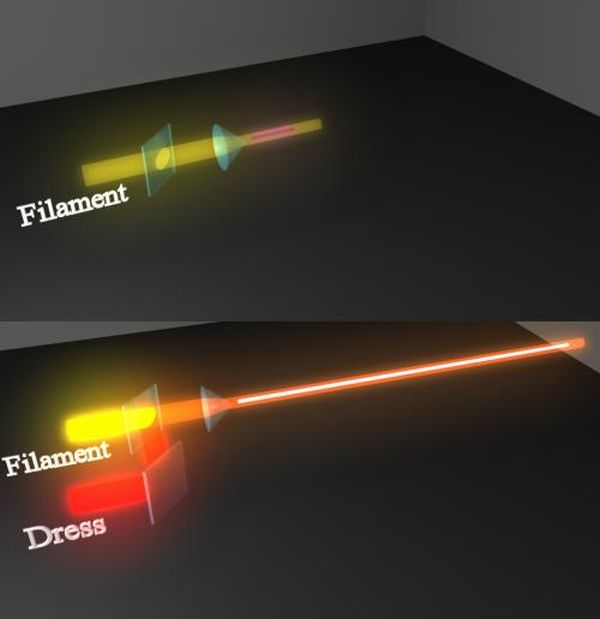Researchers at the University of Arizona and the University of Central Florida have created a technology that has an ability of beaming high-intensity lasers all the way through the layers of atmosphere hence crossing the limitations that it had before. The research is still in its testing phase but the optical scientists envision that it might steer lightning strikes away from human inhabited areas and buildings.
Extending the laser beam
Lasers undergo diffraction because of which it fades away after beaming some feet only. This phenomenon does not allow it to cover longer distances and especially for deviating lightning. Hence, the researchers came about a solution. They dressed primary, high intensity laser beam inside a second beam of lower intensity. Aim of the second beam is to prove a constant energy supply (to the primary shaft of laser) so that it could cover a much longer distance.
The research has already earned $7.5 million from U.S. Department of Defense grant. Jerome Moloney, the lead optical scientist envisions that it could be feasible by improving the propagation of laser beam over many kilometers across the layers of atmosphere.
Understanding the nature of these laser beams would help in fabricating a completely new set of lights that might extent over longer distances and would also bypass the atmospheric turbulence like moisture and rains.
Two beams flying together
Gush of high-energy laser beams targeting shorter time spans are used in the research. As per the researchers, bursts of high-energy beams propagate through longer distances due to its ability of self-focusing. This phenomenon is absent in the traditional laser beams. However, the new method has its drawbacks as well, for instance, while it is propagating through air, the particles gets ionized hence creating plasma and thus laser loses energy.
To counteract this problem, two different types of beams are employed. One is that of higher intensity thus plays the part of self-focusing while the other that envelops it has a longer range of nearly constant intensity thus, moving the ray of light in a linear fashion.
This phenomenon is quite similar to that of noise-canceling headphones; the energy dissipated by the primary beam gets nullified by the energy supply from the secondary or the outer laser beam.
Simulations within the lab under controlled manner have demonstrated that the technology can take laser shaft to more than 165 feet in atmospheric proportions.
Channels of plasma are created as the filaments pass through the air. These channels could be used to attract lightning bolts, as it would be of least resistance for steering the lightening. Hence, controlling lightning strikes during thunderstorm could become a tool in the hands of humans. Had this concept being employed in The Darkest Hour, the movie would have taken a different toll, perhaps couple of awards as well 😉
Source: Phys.org






[…] […]